World economics, technology, and changing social attitudes are constantly affecting how we resource our organizations. The need for the right people, with the right skills, and at the right budget is more relevant now than ever before.
With concerns over skills shortages, and growing competition to attract key talents, workforce planning is an imperative that will keep businesses ahead of the curve. In this article, we’ll take a look at a few use cases of workforce planning application and examples from prominent companies.
Forecasting and assessment
Workforce planning is essential for getting a strategic perspective. Specifically, it enables you to design actionable scenarios to tackle various future challenges. Whether your goal is to address skill gaps and hence future-proof your workforce, bring digital transformation to your company, or else, strategic workforce planning will help you be fully equipped.
That’s exactly what CMS, an international law firm counting over 8,000 employees across 44 countries, put on the top of their priorities. Planning to increase their service profitability, CMS decided to go for creating new workforce architectures. These architectures, implemented as strategic planning models, helped the company simulate business and workforce changes and see what impact these changes have on the service lines’ profitability.
Besides, by working on their HR forecast and strategy, CMS detected the gaps based on future workforce demand and thus designed talent-management activities to transform the workforce. As a result, the company has killed two birds with one stone: got future scenarios and saw the areas of improvement in their recruiting and development targets.
Recruitment and hiring
Speaking of recruitment and hiring efforts, it’s another area where workforce planning helps HRs. By leveraging workforce planning, HRs can streamline their recruitment workflow, optimize expenses related to it, and generally improve the quality of hiring by making data-driven decisions.
For a prominent example of how to level up recruitment, take a look at Siemens. To identify talent market trends and re-charge their hiring efforts, Siemens explored the market and benchmarked job roles and skills their competitors were searching for.
Insights the company got allowed them to gain transparency on future skills, enrich their own job roles and skill profiles with highly demanded skill requirements. Hence, by improving recruitment processes and approaches, Siemens paved the way to attracting best-fitting candidates and outlined the future-forward talent strategy.
Align your workforce with your business objectives
smartPlan is an ultimate workforce planning software that offers the best of two worlds: a comprehensive suite of tools and a simple interface. Learn more about workforce planning opportunities with smartPlan by downloading a free datasheet.
Embracing diversity
One more aspect where workforce planning gets increasingly applicable is diversity. Diversity in the workplace comes in many forms — age, ethnicity, sexual orientation, gender, abilities, and more.
The use cases in this context are numerous, as diversity and inclusion efforts don’t stop at employment. Reducing bias through all the HR procedures from recruitment to promotion is vital, and this is where workforce planning steps in and helps HRs make a difference.
A notable example here is how BASF, chemical products provider, fosters the culture of diversity within their company. Specifically, BASF wanted to predict how the share of females in the company, especially in leadership positions, will develop in the next few years based on historical talent management behavior and levers, like promotions, hires, and attrition.
By implementing workforce planning, the company could increase the diversity share faster, build various scenarios for the development of the diversity share, and get global socio-cultural benchmarks for diversity.
Identifying job and competency needs
Using workforce planning also helps HR leaders create strategies to bridge the talent gap in their organizations, advocate for upskilling and reskilling employees, improve onboarding, and estimate budgets for all the required efforts.
Workforce planning helps to address such questions as:
- How do new technologies and trends influence the way work will be done in the future?
- What are possible future operating models for selected business areas?
- Which critical roles and skills are becoming more relevant in the defined units, which ones are becoming less relevant.
Merck Group, a multinational science and technology company, challenged themselves precisely with these questions. The company identified selected business “must-win” areas and wanted to translate them into a tangible strategic workforce. Among the goals Merck Group outlined and reached with workforce planning were: understanding future operating models, getting better transparency and competitive intelligence, and taking current skill sets to the next level.
Final thoughts
The list of use cases where workforce planning is applied and brings benefits to HRs and the entire organizations doesn’t stop there. Retention, performance, leadership and so many other crucial areas can be addressed and improved at the organizations when powered by workforce planning approach.
Not sure if workforce planning can help in your particular HR challenge? Drop us a line with your question, and we’ll be happy to show you the ways it may help you! In the meanwhile, learn more about strategic workforce planning software that makes life easier for many HR leaders like you.
Stay up to date with our newsletter
Every month, we’ll send you a curated newsletter with our updates and the latest industry news.



























 info@hrforecast.de
info@hrforecast.de
 +49 89 215384810
+49 89 215384810






